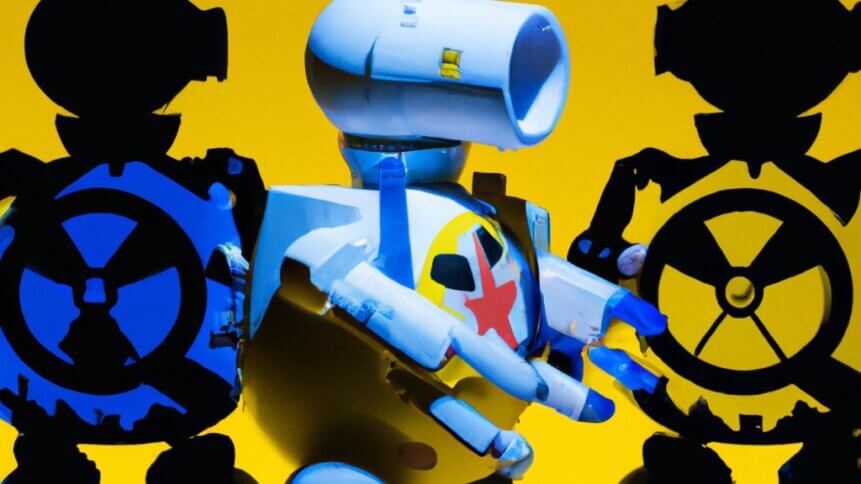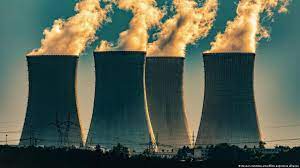What if nuclear energy and AI met?

• Modular nuclear reactors could be the future of AI training.
• They’re altogether less troublesome than traditional large-scale nuclear reactors.
• But training AI takes vast quantities of other resources, especially water, too.
Microsoft AI is going nuclear. The power-intensive process of training LLMs has a huge carbon footprint. It’s hard to stress enough – although we do it often – how much energy is used by data centers. The source of this energy is what determines how sustainable a process is.

It might look smoky, but there’s no carbon in those emissions.
Nuclear power doesn’t cause greenhouse gas emissions.
Now, The Verge reports, Microsoft is pushing forward with a plan to power its AI using nuclear reactors. A job listing suggests the company plans to grow its energy infrastructure with the use of small modular reactors (SMR).
Theoretically, SMRs are cheaper to build and more flexible than full-scale nuclear power stations. There’s momentum behind the idea in the US: the US Nuclear Regulatory Commission greenlit a design by Oregon-based nuclear reactor company NuScale Power just last year.
There are several hurdles, though.
First, Microsoft will need a working SMR design. Next, it’ll have to get its hands on a highly enriched uranium fuel, which the small reactors typically require. Called HALEU, the required fuel is more highly enriched than what traditional reactors use. Finally, there’s the waste – how and where to store it long-term.
That means it’ll probably be a while until the company starts relying on nuclear power to train its AI. But the company is making a start: Microsoft’s founder Bill Gates has created an incubator for SMR designs called TerraPower.
Microsoft AI does fusion?
TerraPower “does not currently have any agreements to sell reactors to Microsoft,” according to a statement to CNBC. Then again, what would an agreement between the companies look like – Gates shaking his own hand?
As well as nuclear fission, Microsoft is investing in nuclear fusion, a far more ambitious endeavor given that decades of research have yet to lead to a practical power system. That was no issue when the company signed a power purchase agreement with Helion, though.
Helion is a fusion startup founded by Sam Altman – yes, that Sam Altman, of OpenAI notoriety – earlier this year. Microsoft hopes to buy electricity from it as soon as 2028.
Powering AI isn’t the only problem Microsoft has encountered, though. A new paper has revealed the absurd amount of water that training AI algorithms requires.
Researchers from the University of California Riverside and the University of Texas Arlington have shared a yet-to-be-peer-reviewed paper titled Making AI Less Thirsty that looks into the environmental impact of AI training, which typically uses tons of water to cool the data centers.

Gates (left) and Altman (right). Together, they are Microsoft AI.
Thirsty data centers
Researchers found that in training GPT-3 alone, Microsoft consumed 185,000 gallons of water. That’s enough water, per the researchers’ calculations, to cool a nuclear reactor. Good news that the company’s getting in some practice, then.
It’s also enough water to produce “370 BMW cars or 320 Tesla electric vehicles.” Had GPT-3 been trained in the company’s Asian data centers, which are even larger, “these numbers would have been tripled.”
It’s not just while it trains that ChatGPT gets thirsty. It “needs to ‘drink’ [equivalent to] a 500ml bottle of water for a simple conversation of roughly 20-50 questions and answers.”
Given the number of Microsoft AI users, this quickly becomes a lot of water.
In the face of water shortages, it’s unnerving that such a huge proportion of it is being channelled into a technology that realistically does little to improve the lives of those that its consumption hits the hardest.
Perhaps the next evolution of Microsoft AI will focus not just on cutting its enormous power consumption, but on its use of other resources, including water.










